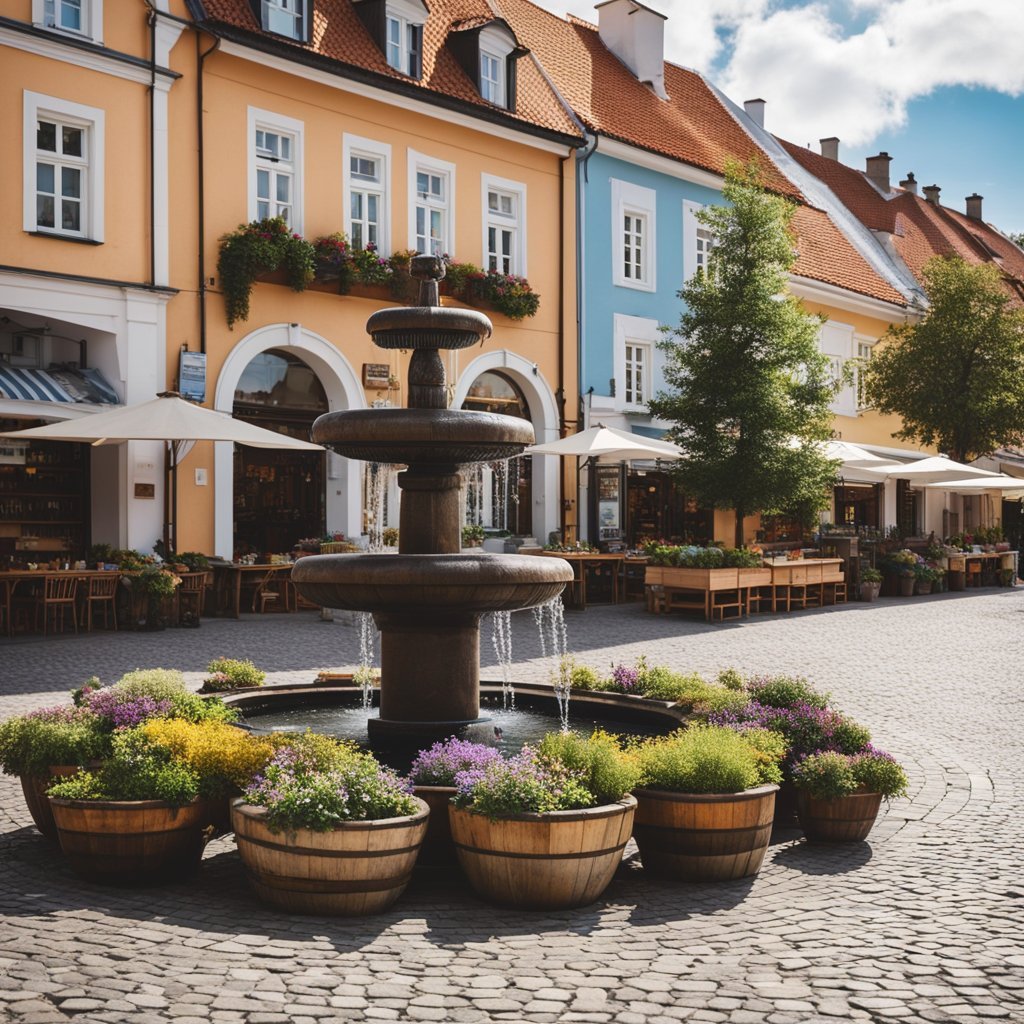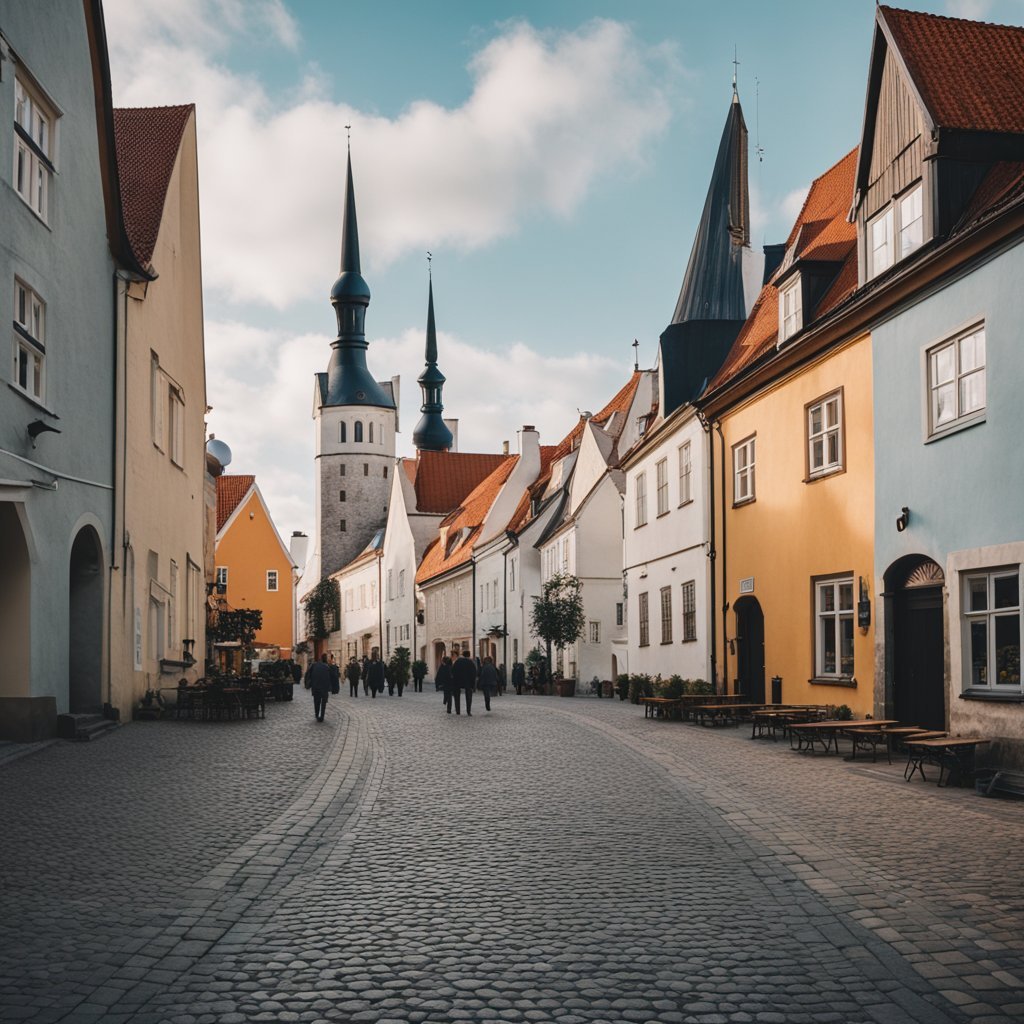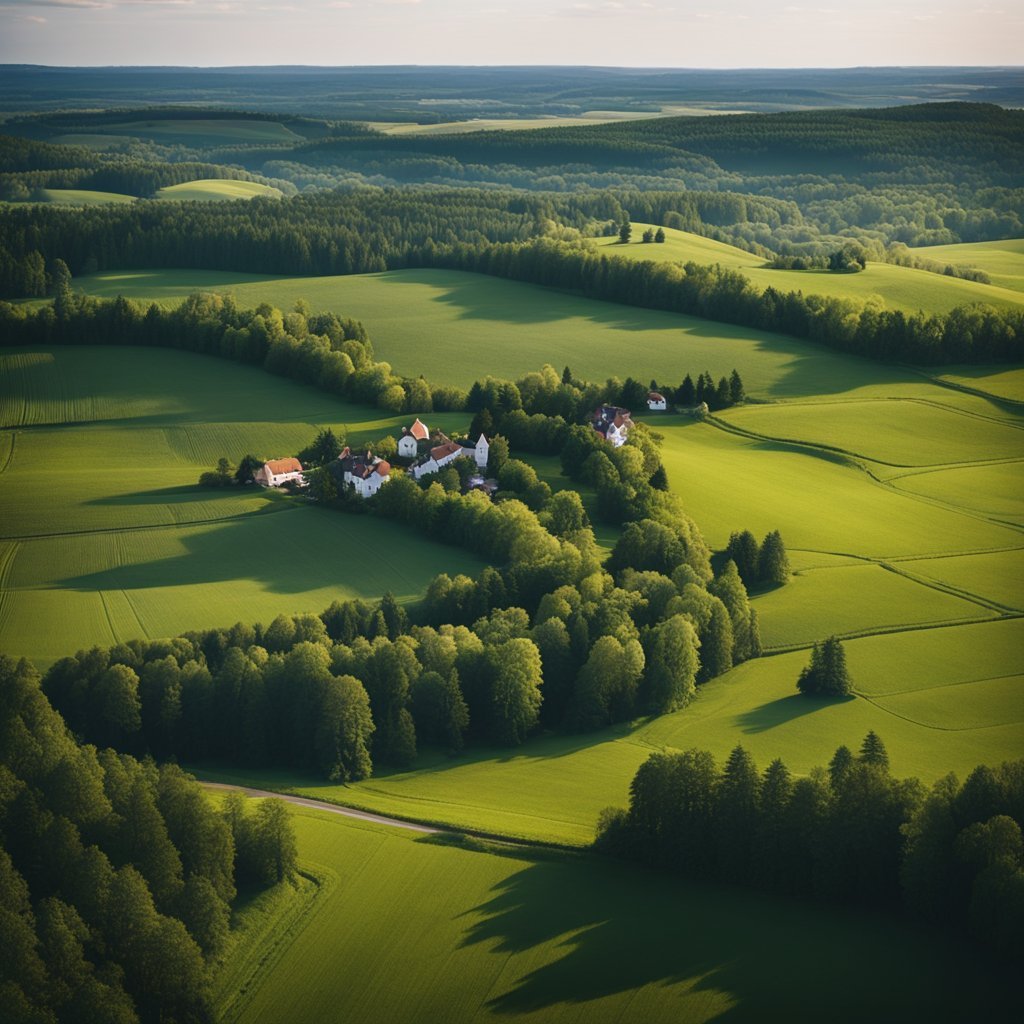
Visit Estonia, a small country in Northern Europe, is often overlooked by tourists. However, those who do visit are in for a treat. Estonia boasts a unique blend of medieval architecture, untouched nature, and Nordic cuisine. The country is often referred to as a hidden gem, and for good reason.
One of the main draws of Estonia is its capital city, Tallinn. The Old Town of Tallinn is a UNESCO World Heritage Site, and for good reason. With its cobblestone streets, Gothic spires, and colourful buildings, it feels like stepping back in time. Visitors can explore the city’s rich history by visiting museums, churches, and other landmarks. In addition to its historical charm, Tallinn is also home to a thriving food and drink scene. From traditional Estonian cuisine to modern fusion dishes, there’s something for everyone to enjoy.
Estonia at a Glance
Estonia is a country located in the Baltic region of Northern Europe. It is bordered to the north by the Gulf of Finland, to the west by the Baltic Sea, to the south by Latvia, and to the east by Lake Peipus and Russia. Across the Baltic Sea lie Sweden and Finland. The country covers an area of 45,227 km² and has a population of approximately 1.3 million people.
Estonia is known for its natural beauty, with over half of the country covered in forests and nearly 1,500 islands dotting its coastline. The country has a temperate climate with warm summers and cold winters, making it an ideal destination for outdoor enthusiasts.
The official language of Estonia is Estonian, which is closely related to Finnish. However, many Estonians also speak English, Russian, and other European languages.
Estonia has a rich cultural heritage, with a blend of influences from its Baltic, Nordic, and Russian neighbors. The country is home to many museums, galleries, and cultural events, including the Black Nights Film Festival and the Tallinn Christmas Market.
In recent years, Estonia has become known as a hub for technology and innovation. The country has a highly developed digital infrastructure and is home to many tech start-ups and entrepreneurs. It is also a leader in e-government, with many public services available online.
Overall, Estonia is a fascinating destination that offers a unique blend of natural beauty, cultural heritage, and technological innovation.
Geographical Overview
Estonia is a country located in the Baltic region of Northern Europe, bordered to the north by the Gulf of Finland, to the west by the Baltic Sea, to the south by Latvia, and to the east by Lake Peipus and Russia. Across the Baltic Sea lie Sweden and Finland. The country has a total area of 45,228 square kilometres, which includes 1,520 islands in the Baltic Sea.
Estonia is known for its diverse landscape, which includes forests, bogs, and wetlands. The country has a relatively flat terrain, with its highest peak, Suur Munamägi, standing at just 318 metres. Forests cover around half of Estonia’s land area, making it one of the most forested countries in Europe.
Lahemaa National Park, located on the northern coast of Estonia, is the country’s largest national park and a popular destination for tourists. The park covers an area of 725 square kilometres and includes a range of landscapes, including forests, bogs, and coastal areas. Visitors can explore the park’s hiking trails, cycle paths, and scenic drives.
Estonia is also home to several islands, the largest of which is Saaremaa. Located in the Baltic Sea, Saaremaa is known for its unique culture, stunning beaches, and historic landmarks. Visitors can explore the island’s medieval castle, visit the Kaali meteorite crater, or relax in one of the island’s many spas.
Overall, Estonia’s diverse landscape and natural beauty make it a popular destination for nature lovers and outdoor enthusiasts. Its proximity to Russia and Latvia also makes it a convenient stop for travellers exploring the Baltic region.

Tallinn, the Capital City
Tallinn, the capital city of Estonia, is a perfect blend of old and new. The city’s rich cultural heritage is evident in its historical setting, while its modern amenities and vibrant nightlife make it a popular tourist destination.
Old Town
Tallinn’s Old Town is a UNESCO World Heritage Site and one of the best-preserved medieval cities in Europe. With its cobbled streets, colourful buildings, and Gothic architecture, it is a must-visit for anyone interested in history and culture. Visitors can explore the city’s numerous museums, churches, and galleries, or simply wander around the charming streets and soak up the atmosphere.
Modern Tallinn
Despite its medieval roots, Tallinn is a modern and vibrant city with plenty to offer visitors. The city boasts a thriving arts and culture scene, with numerous galleries, theatres, and concert halls showcasing local and international talent. There are also plenty of opportunities for shopping, dining, and nightlife, with a wide variety of restaurants, bars, and clubs to suit all tastes.
Telliskivi Creative City
Telliskivi Creative City is a former industrial complex that has been transformed into a hub for creativity and innovation. Located just outside the Old Town, it is home to a wide variety of shops, cafes, studios, and galleries, as well as regular events and festivals. Visitors can explore the area on foot, taking in the street art and vibrant atmosphere, or simply relax and enjoy the creative energy of the city.
In summary, Tallinn is a city that offers something for everyone. Whether you are interested in history and culture, or simply want to enjoy the modern amenities and vibrant nightlife, there is plenty to see and do in this beautiful capital city.
Estonian Cuisine
Estonian cuisine is a reflection of the country’s history, geography, and culture. The cuisine is a blend of Nordic, Russian, and German influences. The dishes are simple, hearty, and made from local ingredients. Estonians take pride in their cuisine and often use fresh, organic, and seasonal produce.
One of the most popular ingredients in Estonian cuisine is fish. With 3,800 km of coastline, Estonia has a deep connection to the sea. Coastal delicacies of fish and seafood are abundant in the north and in the islands. Smoked fish, pickled herring, and fish soup are some of the traditional Estonian dishes that are still popular today.
In addition to fish, cuisine in Northern Estonia traditionally combines potatoes, barley, and greenhouse-grown produce. Black bread, made from rye flour, is a staple in Estonian cuisine. It is dense, dark, and has a slightly sweet taste. It is often served with butter and cheese or as an accompaniment to soups and stews.
Estonian cuisine also has a range of meat dishes. Pork, beef, and game meat are commonly used. One of the most famous Estonian meat dishes is the blood sausage, also known as verivorst. It is made from pork blood, barley, and spices. It is often served during the Christmas season.
Estonians have a sweet tooth and love their desserts. Kringel, a sweet bread with cinnamon and sugar, is a popular pastry. Rye bread pudding, also known as leivasupp, is a dessert made from black bread, cream, and sugar.
Overall, Estonian cuisine is simple, hearty, and made from fresh, local ingredients. It reflects the country’s history, culture, and geography. Visitors to Estonia should try the traditional dishes and experience the unique flavours of Estonian cuisine.

Cultural Highlights
Estonia is a country with a rich cultural heritage and a unique blend of influences from its Nordic, German, and Russian past. Here are some of the cultural highlights that visitors should not miss.
Song and Dance Celebration
Estonians are known for their love of music, and the Song and Dance Celebration is a perfect example of this. The event, which takes place every five years, brings together thousands of singers and dancers from all over the country to perform traditional songs and dances. The first Song Celebration was held in 1869, and since then it has become one of the most important cultural events in Estonia. In 2003, the Song and Dance Celebration was added to the UNESCO list of Masterpieces of the Oral and Intangible Heritage of Humanity.
Museums and Castles
Estonia has a rich history and culture, and there are many museums and castles that visitors can explore to learn more about the country’s past. The Estonian Open Air Museum, located just outside of Tallinn, is a great place to learn about traditional Estonian life. The museum features over 70 buildings, including farmhouses, windmills, and a village school, all set in a picturesque rural landscape. The castle ruins in Rakvere and Kuressaare are also worth a visit, as they offer a glimpse into Estonia’s medieval past.
In addition to these cultural highlights, there are many other museums and cultural institutions throughout Estonia that showcase the country’s art, history, and traditions. Whether you’re interested in music, art, or history, there is something for everyone in Estonia.
Other Notable Cities
Estonia is a country with many beautiful cities, each with its own unique charm. While Tallinn is the most famous city in Estonia, there are other notable cities that are worth visiting. Here are two cities that stand out:
Tartu
Considered as the intellectual hub of Estonia, Tartu is known for the University of Tartu, which is one of the oldest universities in Northern Europe. The city has a rich history and is filled with beautiful architecture. Visitors can explore the Old Town, which is home to many museums, galleries, and cafes. Some of the must-visit places in Tartu include the Tartu Art Museum, the Tartu Toy Museum, and the Tartu University Botanical Gardens.
Pärnu
Pärnu is a beautiful coastal city located in southwestern Estonia. It is known for its beautiful beaches, spas, and parks. Visitors can take a stroll along the beach promenade, which is lined with cafes and restaurants. The city is also home to many historic buildings, including the Red Tower, which is a symbol of the city. Other notable attractions in Pärnu include the Pärnu Museum, the Pärnu Beach Park, and the Pärnu Mud Baths.
Overall, Tartu and Pärnu are two cities that are worth visiting if you are planning a trip to Estonia. They offer a unique glimpse into the history and culture of the country and are sure to leave a lasting impression on visitors.
Exploring the Countryside
Estonia’s countryside is a treasure trove of natural beauty, offering visitors a chance to escape the hustle and bustle of city life and immerse themselves in the country’s wild nature. The countryside is easily accessible by car, with a good road network running across the entire country, making it stress-free to get around.
One of the best ways to explore the countryside is by foraging. Estonia’s forests are rich in berries, mushrooms, and wild herbs, making it a forager’s paradise. Visitors can join guided foraging tours to learn about the different types of flora and fauna that grow in the countryside and how to identify them. Some of the most popular foraged items in Estonia include lingonberries, blueberries, chanterelles, and wild garlic.
In addition to foraging, visitors can also explore the countryside by hiking or cycling. Estonia has a network of well-maintained hiking and cycling trails that wind their way through the countryside, offering stunning views of the landscape. Some of the most popular hiking trails in Estonia include the Lahemaa National Park and the Soomaa National Park.
For those who prefer a more leisurely pace, Estonia’s countryside is home to many charming villages and towns. Visitors can take a stroll through the cobbled streets of the medieval town of Tallinn or explore the quaint fishing village of Käsmu. The island of Saaremaa is also worth a visit, with its unspoilt countryside, fine castle, and inexpensive spa treatments.
Overall, exploring Estonia’s countryside is a must-do activity for visitors. Whether it’s foraging for wild berries, hiking through national parks, or simply taking a stroll through a charming village, there’s something for everyone to enjoy.

Seasonal Attractions
Estonia is a country that offers a variety of seasonal attractions throughout the year. Each season comes with its own unique experiences that visitors can enjoy. Here are some of the seasonal attractions that Estonia has to offer.
Spring
Spring in Estonia is a time of rejuvenation and renewal. The snow melts away, and the countryside comes to life with blooming flowers and greenery. Spring is an excellent time to explore Estonia’s national parks, such as Matsalu National Park, where visitors can see migratory birds and other wildlife. The spring also brings the annual Tallinn Music Week, a festival that showcases local and international musicians.
Summer
Summer is the peak tourist season in Estonia, and for good reason. The weather is warm, and the days are long, giving visitors plenty of time to explore the country’s many attractions. The beaches of Pärnu are a popular destination for sun-seekers, while the island of Saaremaa is a great place to relax and enjoy the natural beauty of Estonia. The summer also brings the Viljandi Folk Music Festival, which celebrates Estonia’s rich folk music tradition.
Autumn
Autumn in Estonia is a time of change, as the leaves turn beautiful shades of red and gold. The autumn is an excellent time to explore Estonia’s forests, where visitors can go mushroom picking or hiking. The Black Nights Film Festival, which takes place in November, is also a popular attraction for film lovers.
Winter
Winter in Estonia is a magical time, with snow-covered landscapes and festive lights. The Christmas markets in Tallinn and Tartu are a must-visit, with their traditional food and handicrafts. Visitors can also enjoy winter sports such as skiing and ice-skating. The winter also brings the annual Tallinn Light Festival, where the city is illuminated by stunning light installations.
In conclusion, Estonia has something to offer visitors in every season. Whether you’re looking for outdoor adventures, cultural events, or simply a relaxing holiday, Estonia has it all.
Getting Around Estonia
Travelling around Estonia is easy and convenient, with a well-developed infrastructure and multiple transportation options available. Visitors can choose to drive, take public transportation, or even walk to explore the country’s many attractions.
Driving in Estonia
Driving in Estonia is a popular option for visitors who want to explore the country at their own pace. The country has a well-maintained road network and a right-hand traffic system. Visitors should note that the speed limit is 50 km/h in built-up areas, 90 km/h on open roads, and 110 km/h on motorways. It is mandatory to wear seat belts, and there is a zero-tolerance policy towards drink-driving. Visitors must carry a valid driving license, third party liability insurance, and a green card or proof of insurance. Cross-border insurance is also required for foreign vehicles.
Public Transportation
Public transportation is a reliable and affordable way to travel around Estonia. The country has an extensive bus network that connects major cities and towns. Visitors can also take ferries to explore Estonia’s many islands. It is important to note that Estonia is a member of the EEA, which means that visitors from other EEA countries can use their national ID cards as proof of identity when travelling by public transportation.
In conclusion, visitors to Estonia have multiple options for getting around the country, whether they choose to drive, take public transportation, or walk. By following the rules of the road and taking advantage of the many transportation options available, visitors can make the most of their time in this beautiful country.




